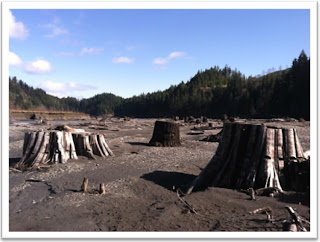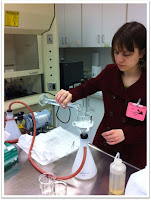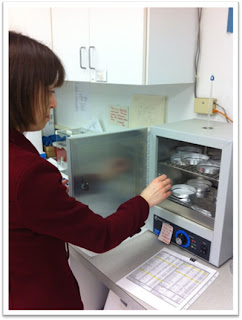CenturyLink Field in Seattle is known as the home of the 12th Man and 72,000 screaming Seattle Seahawks fans that regularly set the Richter scale twitching during every home football game. A typical trip to CenturyLink Field leaves you excited after watching the home team cruise to victory.
But CenturyLink Field also plays host to many other events. From January 25 through February 3 this year, I represented the USFWS at the 66th Annual Seattle Boat Show. This being my first boat show, I didn’t know what to expect. Coworkers shared stories of their experiences from last year, but each experience was unique. With attendance expected to be around 50,000, along with 600 exhibitors and more than 200 free seminars, I knew there was going to be lots of action.
 |
| Two young visitors testing their casting skills |
My first day on the job was exciting and busy from the start. Wide-eyed kids were rushing to our casting booth with high hopes of catching some of our laminated fish (with magnets instead of hooks). After they reeled in a fish, I helped them identify what species of fish they had "caught" (they ranged from bull trout to largemouth bass). Not only were these kids having fun fishing, but they were also learning about sportsmanship, fishing skills, and fisheries conservation.
There were plenty of "older" sportsmen eager to share fishing tales and boaters who were amazed looking at our maps that show the rapid spread of zebra and quagga mussels west from the Great Lakes. Travelers from all over the state of Washington visited our booth, along with some folks from Alaska and Maine. I even ran into people I know from my prior residence in Sitka, Alaska (the king salmon fishing capitol of the world). I would like to think they all walked away with more information about what USFWS does and how they can enjoy and conserve America’s great aquatic resources.
 |
| Educating the public on invasive species |
By the end of the boat show, we had shared time with nearly 1,000 young fishermen and fisherwomen in our casting activity and had close to 3,000 conversations with interested and amazed individuals about invasive species. With informational brochures and invasive species literature running low, the Seattle Boat Show came to a close.
Reflecting on my experience at the show, I found the atmosphere of the Seattle Boat Show to be fun, exciting, energetic, and even crazy at times. The USFWS presence, thanks in large part to Biologist and Outreach Coordinator Dan Spencer, was a great success. The experiences I had during the Seattle Boat Show were priceless! My only regret is not signing up for more shifts so that I could educate more people on the potential threat of invasive species to our pristine Pacific Northwest waters and teach another young boy or girl how to cast a fishing pole for the first time.
--Timothy Grun, Biological Science Technician















